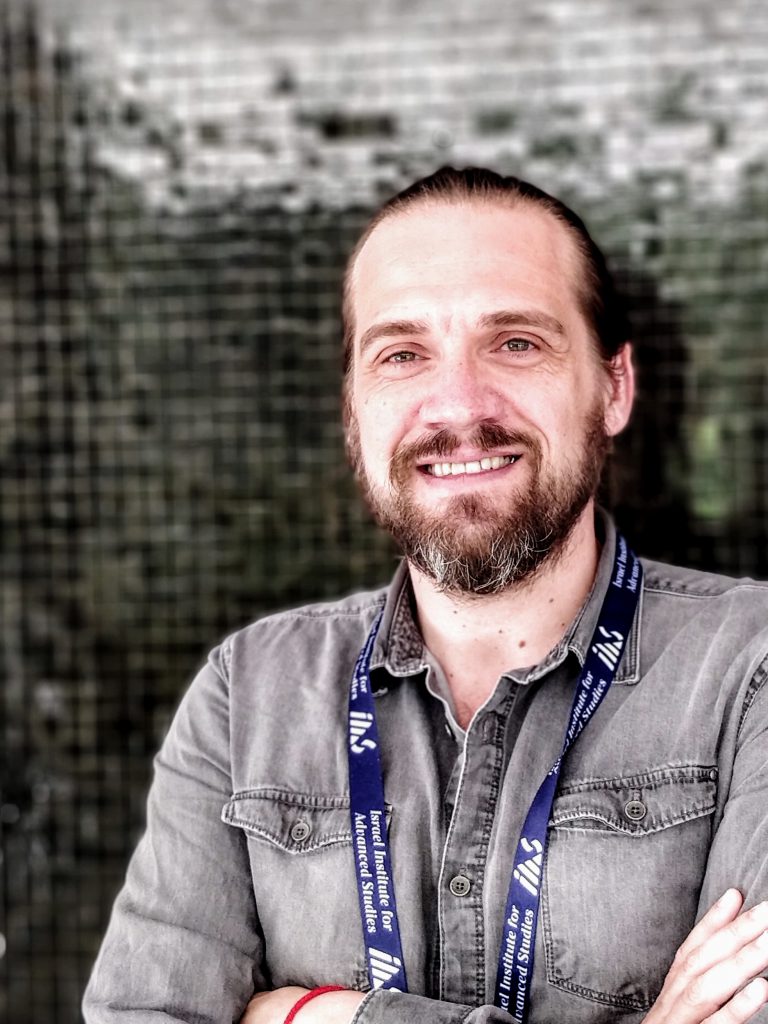“Science Nomad,” Dr. Daniel Angerhausen, Looks for Habitable Planets
By Emily Harari
Dr. Daniel Angerhausen is an astrophysicist and astrobiologist at ETH Zürich. Ask him what the oldest question of humankind is and he’ll immediately jump to life on other planets: Are we alone, or are other planets outside our solar system similarly habitable? But Angerhausen doubles back:
“That’s also a bit exaggerated. Maybe the oldest question is, ‘Can I eat this?’ But I really think [habitability] is one of the biggest scientific questions and also one that is within reach of our generation.”
Early generations of hunter-gatherers might have stumbled across food as they ventured into new terrain, not always knowing where to look but tantalized by the discovery of new food stuffs. And modern astronomers face a similar challenge — if there are exoplanets that can or already do sustain life in the vast Milky Way galaxy, they’ve wondered, where should we look first?
In 2009, NASA launched the Kepler Telescope. It captured a view of the night sky the size of a hand at arm’s length. For five years, it pointed toward the constellation Cygnus, continuously recording the brightness emitted by distant stars. Astronomers measured these optical wavelengths and noticed a dip in brightness from some stars.
A short drop in the amount of light coming from a star could signify that a planet is orbiting it, passing in front of it and temporarily standing in between the star and Earth. Astronomers using Kepler continued to watch for that same drop in starlight to repeat. (A repeatable observation is the hallmark of a reliable experiment, after all.) After several dips, the astronomers could confirm that an exoplanet, or a planet outside our solar system, was orbiting that star and periodically blocking its light from our view. This technique is called the transit method, and it is one of a handful of tools that astronomers like Angerhausen use for spotting exoplanets.
Angerhausen likens the transit method to an electrocardiogram, or an EKG. The data resembles the monitor hooked up to patients in hospitals. With every heartbeat the digital line spikes upward. For an exoplanet, every lap around its star corresponds with a dip in brightness that is plotted as a sharp spike downward. The orbit is consistent like a heartbeat. The shadows become predictable.
Kepler, along with follow-up projects including K2 (a functional replacement) and TESS (a much broader survey for the closer exoplanets) as well as ground-based measurements, confirmed that there are other planets outside our solar system orbiting stars of their own. In fact, astronomers have found over 4,000. It also revealed that rocky exoplanets, which are more likely to carry liquid water, are likely ubiquitous beyond our solar system.
In the wake of Kepler’s findings, Angerhausen was just beginning his postdoctoral career, so he decided to take a closer look at these discovered planets.
The earliest hominids to come across foliage probably combed through the vegetation, searching for sustenance. Perhaps they extracted berries, carefully inspecting the small spheres for signs that they were safe to eat. Similarly, Angerhausen has sought to pluck out from the sky those planets which could nourish life.
In 2014, he joined NASA’s SOFIA mission, a Boeing 747SP retrofitted with a telescope measuring 2.7 meters across, just eclipsing a large hot tub in diameter. He boarded the plane with several other scientists and mounted the troposphere. Below him was most of Earth’s water vapor, aerosols, and atmospheric mass — materials which normally absorb the infrared waves needed for transit studies. With SOFIA, Angerhausen could capture information inaccessible to the telescopes on Earth’s surface.
But working on optical and near-infrared data brought up an issue for Angerhausen. He found ‘degeneracies’ in the data. That’s when astronomers detect light, but they’re uncertain about where it came from. And it’s important to identify the source of light, because scientists can only determine the size of a planet by the amount of light it releases, or emits, on its own.
When an exoplanet orbits a bright star, at first astronomers may think they’ve come across a bright, large planet when, in reality, they were looking at the star’s reflection. A star can shine so bright that its light bounces off of nearby planets.
Unlike a planet, the moon doesn’t emit its own light, so people on Earth rely entirely on the sun to illuminate it in a similar fashion.
‘Degeneracies’ muddle the data. To remove this background noise, Angerhausen applied another round of rigorous calculations.
Ultimately, Angerhausen transitioned to different kinds of data, where optical starlight and ‘degeneracies’ were less prevalent. Today, he prefers to work in the infrared, where “[the data] is much less reflected and much more emitted from the actual planet,” he says.

The infrared also allows Angerhausen to penetrate much deeper into the atmospheres of other planets. In his transit method research, the optical range had limited him to the outer atmospheric rings. Since recently joining the LIFE mission, he’s switched to the mid-infrared. These longer wavelengths allow his observations to reach as far down as the surface of exoplanets.
As astronomers tap into more data, assessing the habitability of exoplanets will require clear criteria. The ancient hominids likely identified edible fruit by some common features like a floral fragrance or a sticky sap. Similarly, Angerhausen is using three characteristics for assessing the habitability of an exoplanet: radius, temperature, and atmospheric composition.
For the LIFE mission, he plans to look for exoplanets anywhere from half to nearly double the size of Earth. And, from information about a planet’s size and orbit, he also determines whether it is within the optimal temperature range called the “Goldilocks zone.” At these temperatures, water— the key ingredient for life as we know it— can remain accessible in its liquid state at the surface of a terrestrial world. Based on the Kepler data, anywhere from 5 to 20 percent of the Sun-like stars in our galaxy are orbited by exoplanets that are approximately Earth-sized and at “Goldilocks” temperatures.
In addition to size and temperature, Angerhausen also examines the atmosphere. Unimpeded starlight in the mid-infrared wavelengths can pass through a planet’s atmosphere, traveling on with the rest of the starlight that might eventually reach our planet.
But when that infrared light runs into certain compounds, like carbon dioxide, some of the light will be absorbed. Some compounds, like methane gas, only absorb infrared waves with a relatively long wavelength. Other compounds, like oxygen gas, absorb infrared waves with shorter wavelengths.
Dr. Angerhausen looks for the wavelengths of infrared light missing from his data. With the absorption spectrum, scientists have already enumerated which wavelengths correspond to light absorption by certain compounds. Therefore, Angerhausen can identify atmospheric compounds present in other planets’ atmospheres based on the wavelengths that are absent from his data.
But our planet has changed over large timescales. Today’s “pale blue dot” looked more like a “pale orange” at times in the past. The atmospheric composition was different back then and changed over billions of years, due in large part to the activity of life. With this in mind, Angerhausen and his colleagues are currently working on a handful of studies looking at exoplanet atmospheres that resemble Earth, in both its current state and its earlier forms.
A self-described “science nomad,” Angerhausen has traveled the globe to join different teams of researchers. In addition to working with astronomers, Angerhausen also collaborates with Silicon Valley computer scientists. At NASA’s Frontier Development Lab (FDL), they utilize cloud-based storage and computing to process immense loads of data. Consequently, they’re working to train computers to spot patterns of intelligent life on other planets.
Angerhausen especially enjoys working in interdisciplinary teams. In fact, he’s assembled a diverse group of instructors for his organization, The Explainables. “It’s… a team of scientists, communicators, and creators that help people communicate technology or science,” says Angerhausen. The dynamic team includes researchers, graphic designers, journalists, lawyers, and performers.
This summer, The Explainables trained the research associates at Blue Marble Space Institute of Science (BMSIS) to communicate the fundamental questions that drive their space research:
“Can I eat this?”
“Are we alone?”
The astronomer’s search for life-sustaining systems may not be as tangible as the hunter-gatherer’s. But with his research and science communication, Dr. Daniel Angerhausen brings the answers within reach.

Emily Harari is a science communicator. She studied molecular and cell biology at UC Berkeley and has enjoyed working in biotechnology startups. She aspires to promote trust and progress in biotech by applying her research experience and writing skills.
